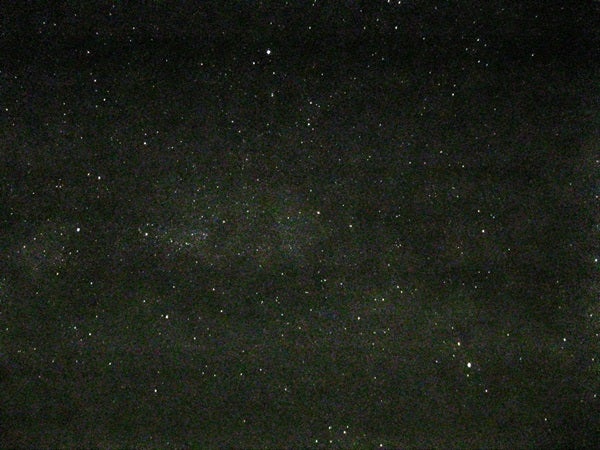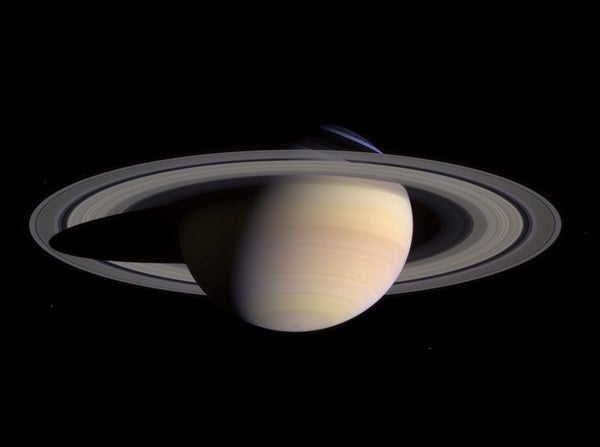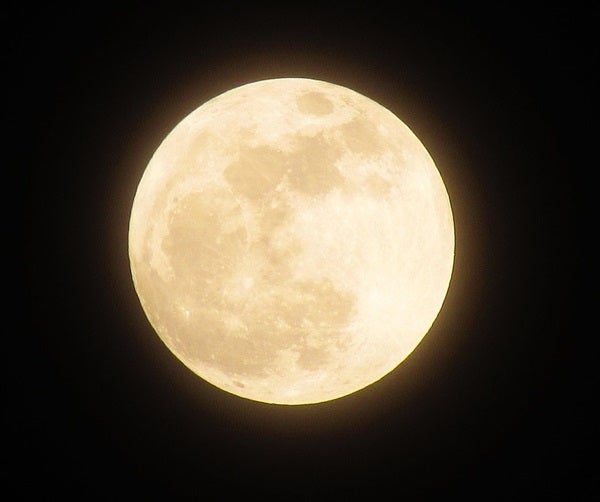Friday, June 2
The conspicuous Summer Triangle asterism dominates the eastern sky in late evening. Vega, the triangle’s brightest member, shines at magnitude 0.0 and stands highest of the three stars. To its lower left lies Deneb; at magnitude 1.3, it is the faintest of the trio. Magnitude 0.8 Altair resides at the bottom right and completes the bright asterism. Despite its name, the Summer Triangle appears prominent from late spring until winter begins.
Saturday, June 3
Venus lies 46° west of the Sun today, its greatest elongation during this morning apparition. It rises around 3:30 a.m. local daylight time and appears brilliant in the east before dawn. The planet shines at magnitude –4.4 and stands nearly 15° above the horizon an hour before sunrise. When viewed through a telescope this morning, Venus’ disk spans 24″ and appears half-lit. Although stunning in its own right, the inner world also serves as a guide to distant Uranus. The outer planet lies within 2° of its bright neighbor today and tomorrow morning. Target Venus with your binoculars and imagine it as the center of a clock’s face. You’ll find Uranus at the 11 o’clock position this morning and at 12 o’clock tomorrow. You’ll need to look closely to spot magnitude 5.9 Uranus, which glows some 10,000 times fainter than Venus.
The waxing gibbous Moon passes 2° north of Jupiter this evening. The pair dominates the sky from shortly after sunset until well past midnight
Sunday, June 4
Comet Johnson (C/2015 V2) should glow at 7th magnitude this week, bright enough to see through binoculars or a small telescope despite the Moon’s presence. It rides high in the south during late evening in the company of magnitude 0.0 Arcturus. The comet appears 5° east of the star both last night and tonight. This first-time visitor to the inner solar system makes its closest approach to Earth on June 5 and comes closest to the Sun just one week later.
Monday, June 5
Although Saturn will reach opposition and peak visibility in 10 days, observers will be hard-pressed to see it as inferior this week. The ringed planet rises around 9 p.m. local daylight time and appears highest in the south around 1:30 a.m. Saturn shines at magnitude 0.0 and stands out against the relatively dim background stars of southern Ophiuchus. If you target the beautiful world through a telescope, you’ll see its 18″-diameter disk surrounded by a ring system that spans 42″ and tilts 27° to our line of sight.
The dwarf planet Ceres is in conjunction with the Sun at 8 p.m. EDT. This object, which lies in the main asteroid belt, then lies on the far side of the Sun from our perspective and can’t be seen.
Tuesday, June 6
Neptune rises before 2 a.m. local daylight time and appears about 20° above the southeastern horizon as twilight commences. The distant world glows at magnitude 7.9, so you’ll need binoculars or a telescope to spot it. Fortunately, it lies near a brighter star that will guide you. This morning, Neptune stands 16′ southeast of 6th-magnitude 81 Aquarii. The star shines some five times brighter than the planet. You can confirm your sighting of Neptune through a telescope, which reveals the planet’s 2.3″-diameter disk and blue-gray color.
Wednesday, June 7
Although asteroid 12 Victoria glows dimly at magnitude 10.6, you shouldn’t have a major problem finding it through a telescope this week. The asteroid lies just 2.5° east of 1st-magnitude Spica, the blue-white luminary of Virgo. This region resides in the southwestern sky after evening twilight fades away. Tonight and tomorrow night are particularly good times to track down Victoria because it skims just east of a triangle of stars that includes 7th-magnitude 56 Virginis. If you sketch the field tonight and then return to the same area tomorrow, you should be able to detect the asteroid’s movement relative to the stellar background.
Thursday, June 8
The Moon reaches apogee, the farthest point in its orbit around Earth, at 6:21 p.m. EDT. It then lies 252,526 miles (406,401 kilometers) from Earth’s center.
Friday, June 9
Full Moon occurs at 9:10 a.m. EDT, though our satellite will look completely illuminated all night. You can find it low in the southeast as darkness falls and peaking in the south around 1:30 a.m. local daylight time. The Moon lies on the border between Ophiuchus the Serpent-bearer and Sagittarius the Archer, just 3° north of magnitude 0.0 Saturn.
Saturday, June 10
For people who live near 30° north latitude, today marks the earliest sunrise of the year. Although the Northern Hemisphere’s longest day doesn’t occur until Earth’s summer solstice 10 days from now, earliest sunrise happens several days before and latest sunset several days after. The specific dates depend on your latitude, however. In general, earliest sunrise occurs closer to the solstice the farther north you live.
Sunday, June 11
Jupiter appears halfway to the zenith in the southern sky during twilight this week and doesn’t set until after 2 a.m. local daylight time. The brilliant planet shines at magnitude –2.2 among the background stars of Virgo, some 11° west-northwest of the Maiden’s brightest star, 1st-magnitude Spica. When viewed through a telescope, Jupiter’s disk spans 40″ and shows a wealth of detail in its massive atmosphere.












